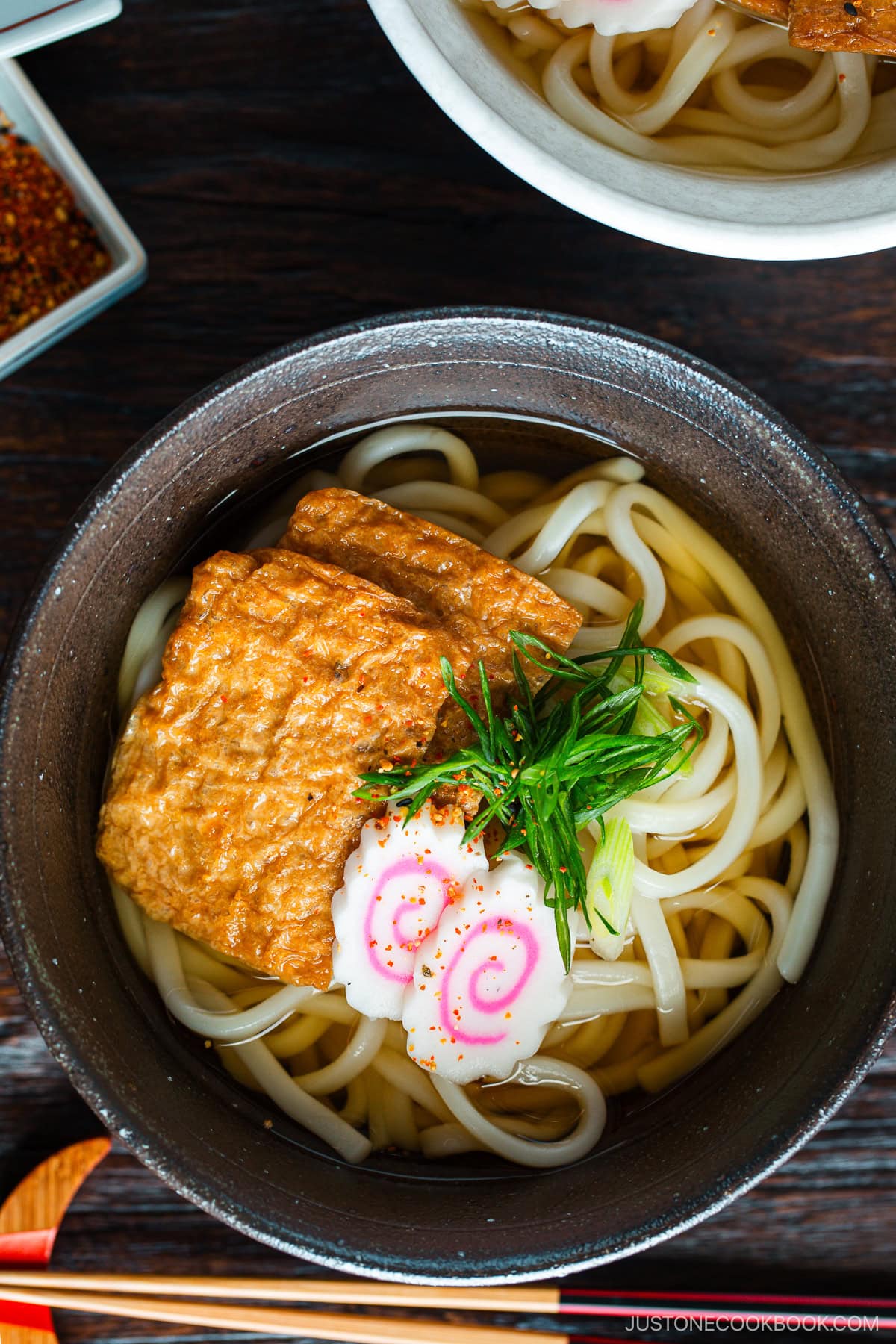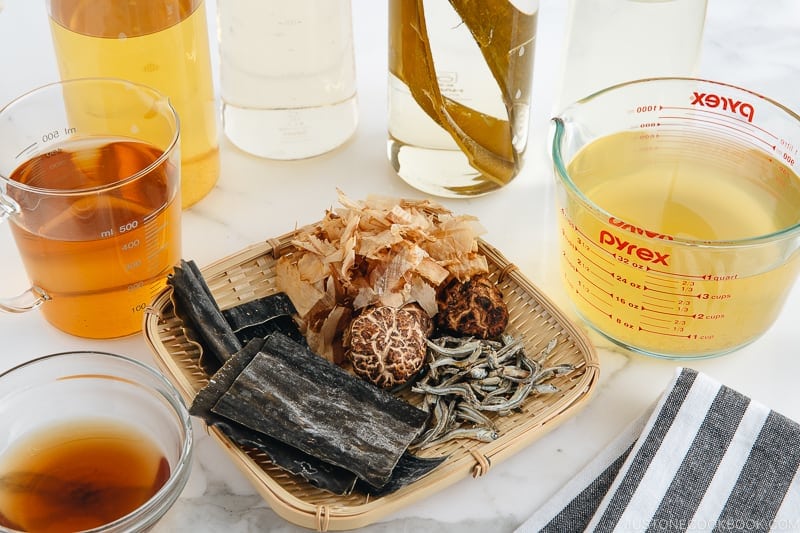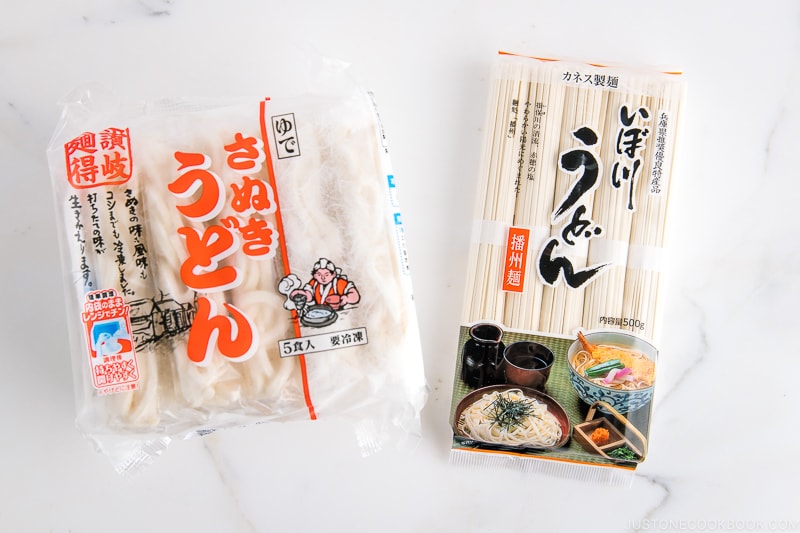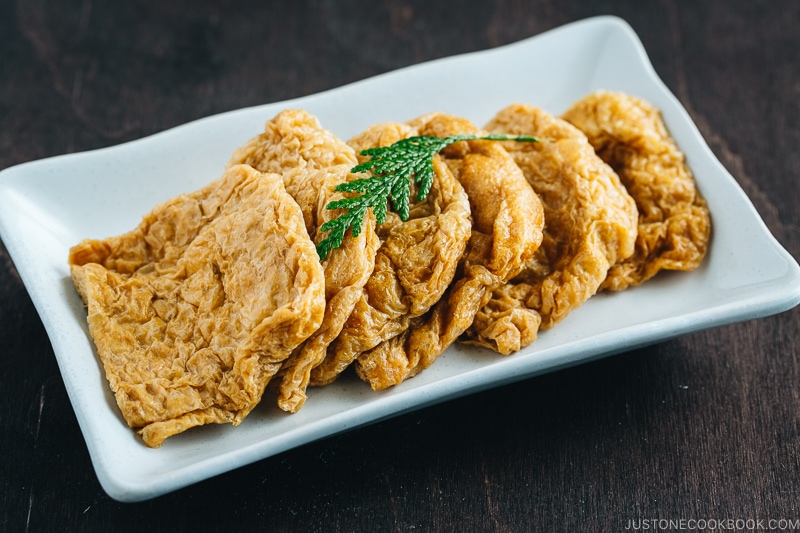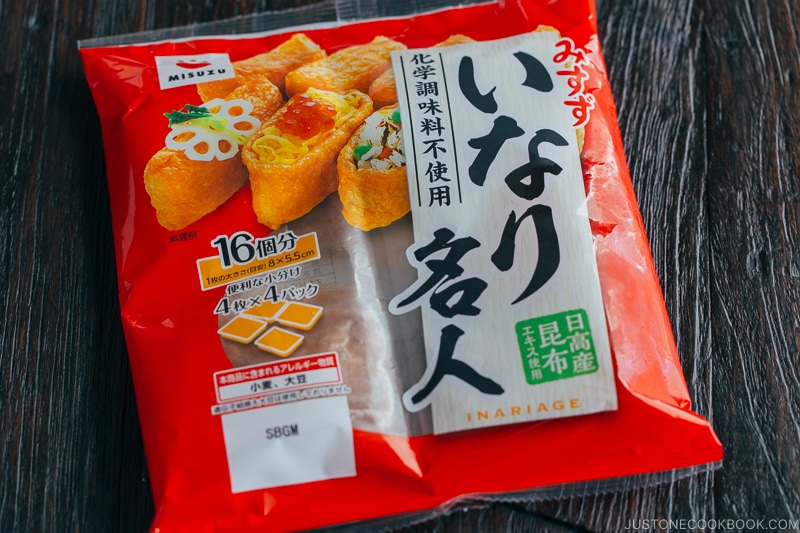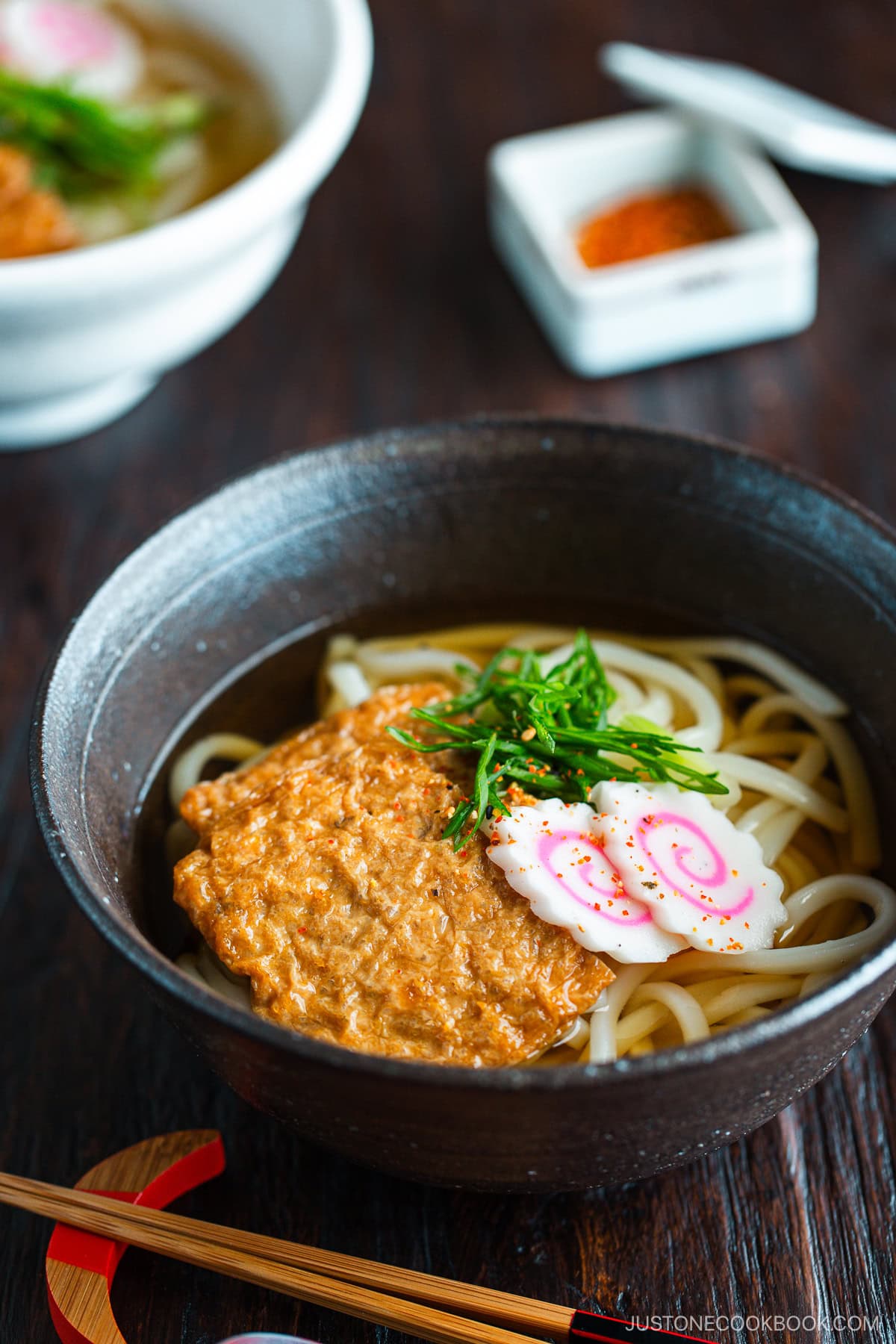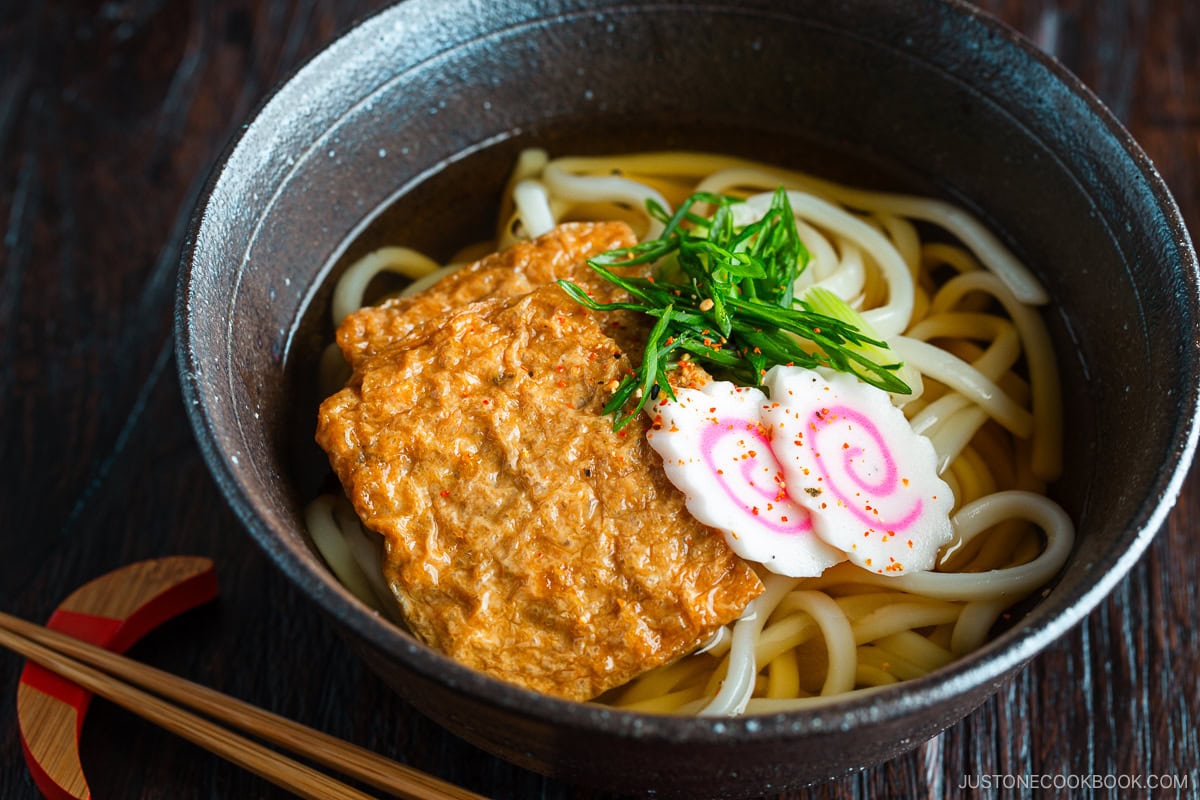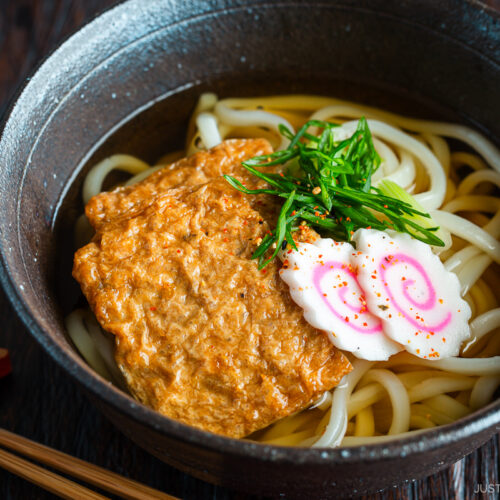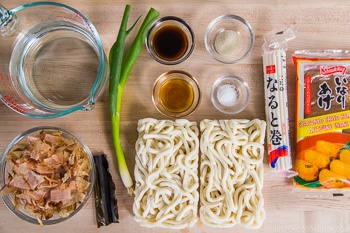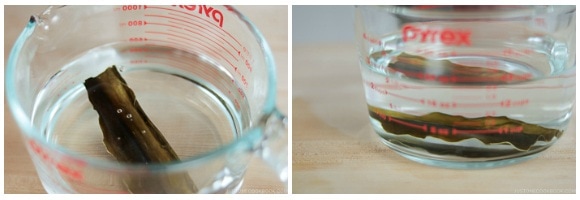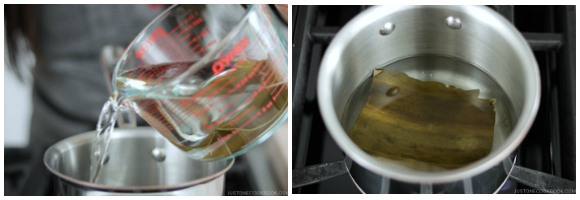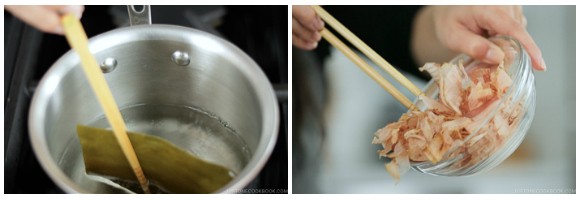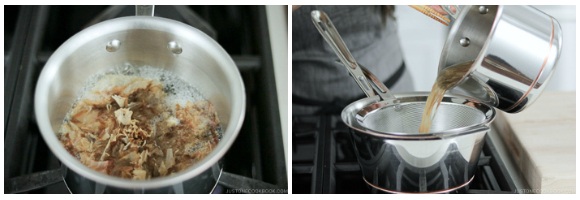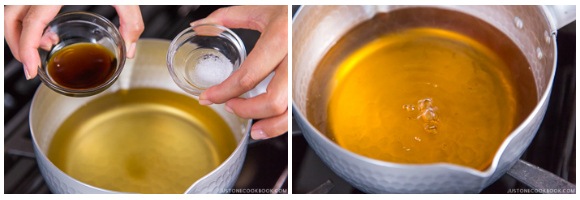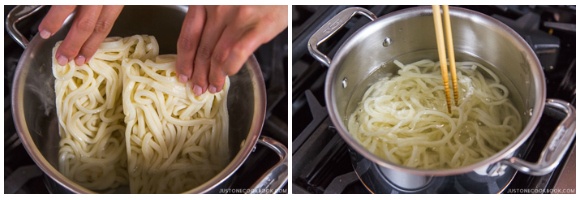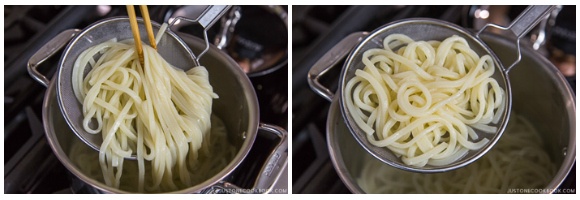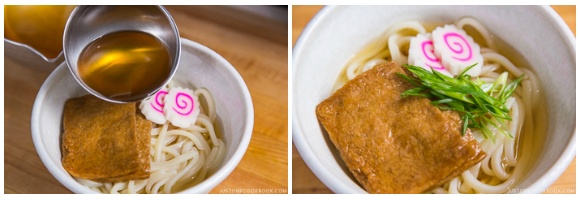If you’re looking for the ultimate Japanese comfort food that can lift up your mood any time of year, I can’t recommend enough cooking this bowl of Kitsune Udon (Noodle Soup) (きつねうどん). It’s a humble dish, yet so comforting and satisfying. The rich broth, chewy noodles, and fried tofu pouches—everything comes together so nicely that you just want to hold your face above the bowl and let the aroma envelop you. It’s so simple and quick to make this kitsune udon recipe, so there is no excuse not to try it!
What is Kitsune Udon?
Kitsune udon is a traditional Japanese noodle soup of chewy and thick udon noodles, light and flavorful dashi broth, and deep-fried tofu pouches (aburaage) seasoned with soy sauce, mirin, and sugar. We typically served it hot, but in the sweltering summer months, we enjoy it chilled with a few spoonfuls of dashi-based sauce poured on top. Kitsune means “fox” in Japanese. There are a few theories about why we call this dish “fox udon.” One is that aburaage appears as a fox’s favorite food in Japanese folktales, so people call this dish kitsune udon from the tofu pouches on top. Another theory is that aburaage is called kitsune because it’s the same color as a fox. This makes the most sense to me since Japanese recipes often say to “cook to a fox color” to describe a golden brown color.
3 Key Ingredients for Kitsune Udon
To make the perfect bowl of kitsune udon, you need high-quality ingredients, starting with dashi (Japanese soup stock), udon noodles, and aburaage.
1. Dashi Stock
I can’t stress enough the importance of good-quality dashi. It gives the soup that rich, umami flavor that you’ll want to sip to the last drop. In the past, I’ve shared three ways to make dashi with dashi powder, a dashi packet, or from scratch. For this recipe, I only recommend using homemade dashi or a dashi packet. Dashi powder doesn’t provide enough depth for a flavorful broth. Please don’t be intimidated by making dashi from scratch. Spend the extra 20 minutes to make a super tasty broth—trust me, it’s worth your time and it’s easy to make! I recommend Awase Dashi (kombu + katsuobushi/bonito flakes) or Katsuo Dashi (just bonito flakes) for udon noodle soup broth. For vegetarian/vegan dashi, use Kombu Dashi.
2. Udon Noodles
Udon noodles are now popular outside of Japan, so you can easily purchase them in regular US grocery stores. However, many products are not very good. The noodles don’t have the right texture and tend to break into pieces. If your local Japanese or Asian grocery stores carry frozen Sanuki udon noodles in the freezer section or parboiled Sanuki udon noodles, try one of those options. They are chewier and not doughy/floury, and won’t break as easily.
3. Aburaage: Packaged vs. Homemade
Living outside of Japan, I know that raw ingredients can be harder to find than prepackaged foods. Inari age (seasoned deep-fried tofu pouch) is made of aburaage (deep-fried tofu pouch). When you want to make homemade Inari age, you need aburaage, but it’s really difficult to find unless you have a well-stocked Japanese grocery store. Packaged Inari age is widely available even in Asian grocery stores as they are used for making the popular Inari Sushi. If you are lucky enough to find aburaage, try making my Homemade Inari Age! It’s preservative-free and really delicious!
Ingredients for Kitsune Udon
Here’s a complete list of ingredients you’ll need:
kombu (dried kelp), water, and katsuobushi (dried bonito flakes) – for the dashi dashi, mirin, sugar, salt, and usukuchi (light-colored) soy sauce – for the soup broth; you can substitute regular soy sauce Inari age (seasoned fried tofu pouch) – canned or refrigerated; or make it homemade green onion/scallion narutomaki (fish cakes) – optional udon noodles shichimi togarashi (Japanese seven spice) – optional; sprinkle for a spicy kick
How to Make Kitsune Udon
Here’s a quick overview; see my recipe below for full instructions.
Vegetarian/Vegan-Friendly Kitsune Udon
There is a misconception that dashi is not vegetarian/vegan, but that’s not completely true. While standard dashi is made with bonito flakes and kombu, we also use which is 100% vegetarian/vegan Kombu Dashi in our daily Japanese cooking. Use kombu dashi to make vegetarian/vegan kitsune udon and skip those spiral fish cakes as a garnish. And as simple as that, you have a vegetarian/vegan udon!
Did you watch Netflix “Midnight Diner: Tokyo Stories” Season 2?
You can find this Kitsune Udon dish featured on the popular Netflix® – Midnight Diner: Tokyo Stories (Season 2, Episode 7). In the show, the master prepares a bowl of Kitsune Udon with a large homemade Inari age. It’s such a humble dish, yet so comforting and satisfying.
Other Hot Udon Noodle Soup Recipes
Niku Udon (Beef Udon) Miso Nikomi Udon Nabeyaki Udon Curry Udon
Editor’s Note: The post was originally published on May 25, 2011. Pictures were updated in November 2017. The new video was added in April 2018. The post has been updated in May 2020.
